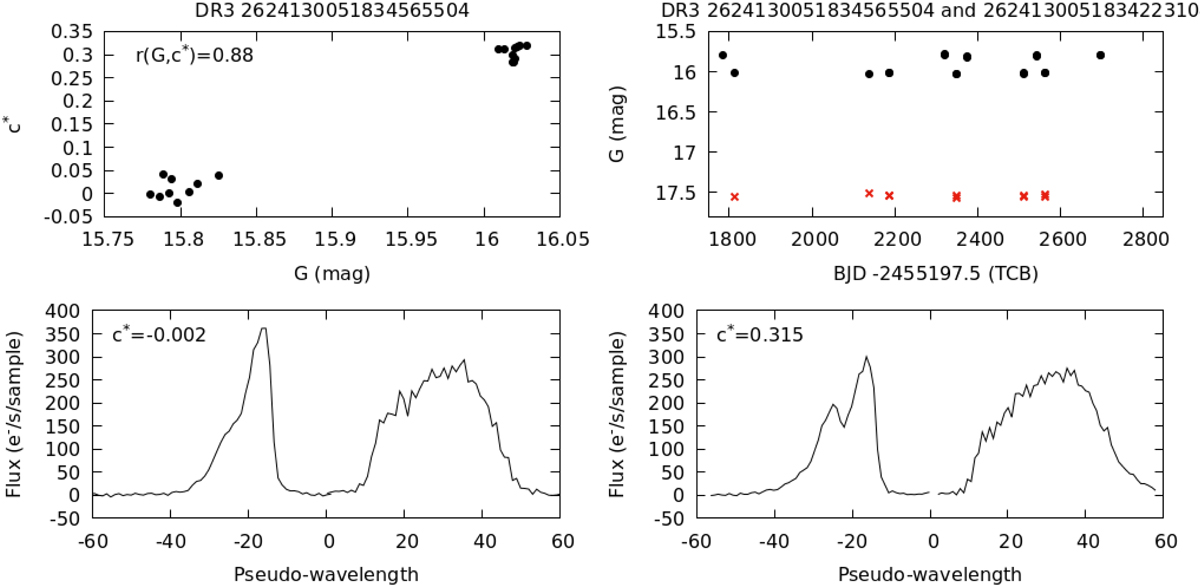Fig. A.3.

Download original image
Example of a partially resolved binary. Top left panel: c* vs. G for the star DR3 2624130051834565504. The data are distributed around two clumps, one around c* ≃ 0 and the second around c* ≃ 0.315. Top right panel: G magnitude time series of the star Gaia DR3 2624130051834565504 and of its close neighbour, Gaia DR3 2624130051834223104. The two sources form a partially resolved binary; i.e. depending on the observation time and on the scan angle, the two stars can be resolved or unresolved in the astrometric instrument. Bottom left panel: GBP and GRP epoch spectra corresponding to the case in which the two stars are unresolved both by the astrometric and spectrophotometric instruments. In this case, c* is close to 0 because both instruments collect the fluxes coming from the two stars. Bottom right panel: GBP and GRP epoch spectra corresponding to the case in which the stars are resolved in the astrometric field but blended in the GBP and GRP FoV. In this case, the source exhibits a strong excess factor because the astrometric instrument collects the flux coming from a single source whereas the spectrophotometric instrument collects the flux coming from the star and its neighbour. We note that the GBP and GRP epoch spectra are only shown here for illustration; they will be available to the community in Gaia DR4.
Current usage metrics show cumulative count of Article Views (full-text article views including HTML views, PDF and ePub downloads, according to the available data) and Abstracts Views on Vision4Press platform.
Data correspond to usage on the plateform after 2015. The current usage metrics is available 48-96 hours after online publication and is updated daily on week days.
Initial download of the metrics may take a while.


